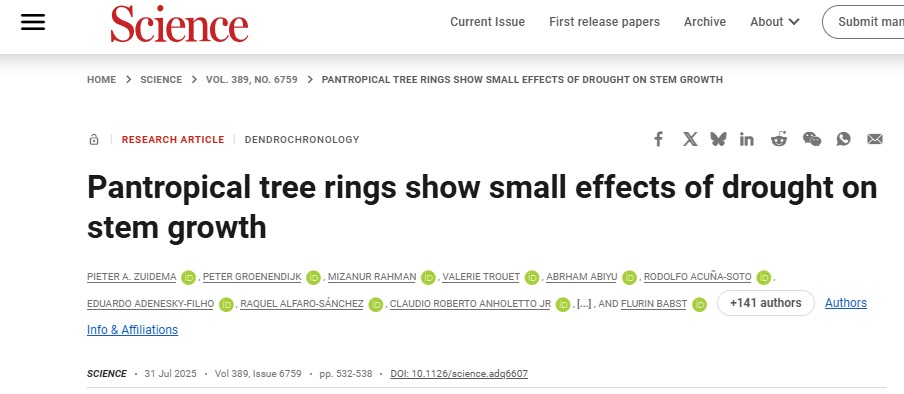Pantropical tree rings show small effects of drought on stem growth
Abstract Increasing drought pressure under anthropogenic climate change may jeopardize the potential of tropical forests to capture carbon in woody biomass and act as a long-term carbon dioxide sink. To evaluate this risk, we assessed drought impacts in 483 tree-ring chronologies from across the tropics and found an overall modest stem growth decline (2.5% with […]
Pantropical tree rings show small effects of drought on stem growth Read More »



